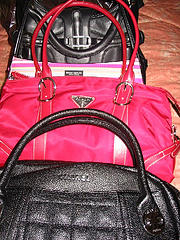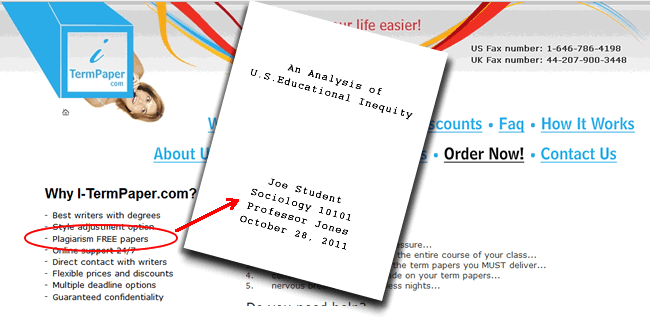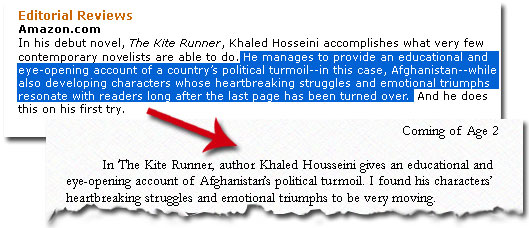7.4: Utilizing
- Page ID
- 72841
\( \newcommand{\vecs}[1]{\overset { \scriptstyle \rightharpoonup} {\mathbf{#1}} } \)
\( \newcommand{\vecd}[1]{\overset{-\!-\!\rightharpoonup}{\vphantom{a}\smash {#1}}} \)
\( \newcommand{\dsum}{\displaystyle\sum\limits} \)
\( \newcommand{\dint}{\displaystyle\int\limits} \)
\( \newcommand{\dlim}{\displaystyle\lim\limits} \)
\( \newcommand{\id}{\mathrm{id}}\) \( \newcommand{\Span}{\mathrm{span}}\)
( \newcommand{\kernel}{\mathrm{null}\,}\) \( \newcommand{\range}{\mathrm{range}\,}\)
\( \newcommand{\RealPart}{\mathrm{Re}}\) \( \newcommand{\ImaginaryPart}{\mathrm{Im}}\)
\( \newcommand{\Argument}{\mathrm{Arg}}\) \( \newcommand{\norm}[1]{\| #1 \|}\)
\( \newcommand{\inner}[2]{\langle #1, #2 \rangle}\)
\( \newcommand{\Span}{\mathrm{span}}\)
\( \newcommand{\id}{\mathrm{id}}\)
\( \newcommand{\Span}{\mathrm{span}}\)
\( \newcommand{\kernel}{\mathrm{null}\,}\)
\( \newcommand{\range}{\mathrm{range}\,}\)
\( \newcommand{\RealPart}{\mathrm{Re}}\)
\( \newcommand{\ImaginaryPart}{\mathrm{Im}}\)
\( \newcommand{\Argument}{\mathrm{Arg}}\)
\( \newcommand{\norm}[1]{\| #1 \|}\)
\( \newcommand{\inner}[2]{\langle #1, #2 \rangle}\)
\( \newcommand{\Span}{\mathrm{span}}\) \( \newcommand{\AA}{\unicode[.8,0]{x212B}}\)
\( \newcommand{\vectorA}[1]{\vec{#1}} % arrow\)
\( \newcommand{\vectorAt}[1]{\vec{\text{#1}}} % arrow\)
\( \newcommand{\vectorB}[1]{\overset { \scriptstyle \rightharpoonup} {\mathbf{#1}} } \)
\( \newcommand{\vectorC}[1]{\textbf{#1}} \)
\( \newcommand{\vectorD}[1]{\overrightarrow{#1}} \)
\( \newcommand{\vectorDt}[1]{\overrightarrow{\text{#1}}} \)
\( \newcommand{\vectE}[1]{\overset{-\!-\!\rightharpoonup}{\vphantom{a}\smash{\mathbf {#1}}}} \)
\( \newcommand{\vecs}[1]{\overset { \scriptstyle \rightharpoonup} {\mathbf{#1}} } \)
\( \newcommand{\vecd}[1]{\overset{-\!-\!\rightharpoonup}{\vphantom{a}\smash {#1}}} \)
\(\newcommand{\avec}{\mathbf a}\) \(\newcommand{\bvec}{\mathbf b}\) \(\newcommand{\cvec}{\mathbf c}\) \(\newcommand{\dvec}{\mathbf d}\) \(\newcommand{\dtil}{\widetilde{\mathbf d}}\) \(\newcommand{\evec}{\mathbf e}\) \(\newcommand{\fvec}{\mathbf f}\) \(\newcommand{\nvec}{\mathbf n}\) \(\newcommand{\pvec}{\mathbf p}\) \(\newcommand{\qvec}{\mathbf q}\) \(\newcommand{\svec}{\mathbf s}\) \(\newcommand{\tvec}{\mathbf t}\) \(\newcommand{\uvec}{\mathbf u}\) \(\newcommand{\vvec}{\mathbf v}\) \(\newcommand{\wvec}{\mathbf w}\) \(\newcommand{\xvec}{\mathbf x}\) \(\newcommand{\yvec}{\mathbf y}\) \(\newcommand{\zvec}{\mathbf z}\) \(\newcommand{\rvec}{\mathbf r}\) \(\newcommand{\mvec}{\mathbf m}\) \(\newcommand{\zerovec}{\mathbf 0}\) \(\newcommand{\onevec}{\mathbf 1}\) \(\newcommand{\real}{\mathbb R}\) \(\newcommand{\twovec}[2]{\left[\begin{array}{r}#1 \\ #2 \end{array}\right]}\) \(\newcommand{\ctwovec}[2]{\left[\begin{array}{c}#1 \\ #2 \end{array}\right]}\) \(\newcommand{\threevec}[3]{\left[\begin{array}{r}#1 \\ #2 \\ #3 \end{array}\right]}\) \(\newcommand{\cthreevec}[3]{\left[\begin{array}{c}#1 \\ #2 \\ #3 \end{array}\right]}\) \(\newcommand{\fourvec}[4]{\left[\begin{array}{r}#1 \\ #2 \\ #3 \\ #4 \end{array}\right]}\) \(\newcommand{\cfourvec}[4]{\left[\begin{array}{c}#1 \\ #2 \\ #3 \\ #4 \end{array}\right]}\) \(\newcommand{\fivevec}[5]{\left[\begin{array}{r}#1 \\ #2 \\ #3 \\ #4 \\ #5 \\ \end{array}\right]}\) \(\newcommand{\cfivevec}[5]{\left[\begin{array}{c}#1 \\ #2 \\ #3 \\ #4 \\ #5 \\ \end{array}\right]}\) \(\newcommand{\mattwo}[4]{\left[\begin{array}{rr}#1 \amp #2 \\ #3 \amp #4 \\ \end{array}\right]}\) \(\newcommand{\laspan}[1]{\text{Span}\{#1\}}\) \(\newcommand{\bcal}{\cal B}\) \(\newcommand{\ccal}{\cal C}\) \(\newcommand{\scal}{\cal S}\) \(\newcommand{\wcal}{\cal W}\) \(\newcommand{\ecal}{\cal E}\) \(\newcommand{\coords}[2]{\left\{#1\right\}_{#2}}\) \(\newcommand{\gray}[1]{\color{gray}{#1}}\) \(\newcommand{\lgray}[1]{\color{lightgray}{#1}}\) \(\newcommand{\rank}{\operatorname{rank}}\) \(\newcommand{\row}{\text{Row}}\) \(\newcommand{\col}{\text{Col}}\) \(\renewcommand{\row}{\text{Row}}\) \(\newcommand{\nul}{\text{Nul}}\) \(\newcommand{\var}{\text{Var}}\) \(\newcommand{\corr}{\text{corr}}\) \(\newcommand{\len}[1]{\left|#1\right|}\) \(\newcommand{\bbar}{\overline{\bvec}}\) \(\newcommand{\bhat}{\widehat{\bvec}}\) \(\newcommand{\bperp}{\bvec^\perp}\) \(\newcommand{\xhat}{\widehat{\xvec}}\) \(\newcommand{\vhat}{\widehat{\vvec}}\) \(\newcommand{\uhat}{\widehat{\uvec}}\) \(\newcommand{\what}{\widehat{\wvec}}\) \(\newcommand{\Sighat}{\widehat{\Sigma}}\) \(\newcommand{\lt}{<}\) \(\newcommand{\gt}{>}\) \(\newcommand{\amp}{&}\) \(\definecolor{fillinmathshade}{gray}{0.9}\)You’ve identified, located, and evaluated information created by other people. Now it’s time to utilize that information.
 The final part of the research process is to communicate and support your conclusions. Citing sources gathered during your research helps you build your argument. Including graphics or other creative expressions can illustrate a point or add impact to your project.
The final part of the research process is to communicate and support your conclusions. Citing sources gathered during your research helps you build your argument. Including graphics or other creative expressions can illustrate a point or add impact to your project.
Incorporating the work of others is acceptable in academic writing, but you have a responsibility to let your audience know when you are using someone else’s ideas and where you found that information.
Honesty
Our society places high value on honesty and the concept of fair play. We are taught from a young age that it is not nice to take things that belong to other people.
Dishonesty, Theft, Plagiarism, and Copyright
Plagiarism and violation of copyright are essentially stealing words, ideas, or creative works–intellectual property that rightfully belongs to someone else.
Plagiarism
- Borrowing the idea or opinion of someone else without giving the person credit
- Restating or paraphrasing a passage without citing the original author
- Borrowing facts or statistics that are not common knowledge without proper acknowledgement
Famous Faces of Plagiarism
Stephen Ambrose (1936–2002), a highly regarded historian and writer, was accused of plagiarizing several passages of one of his later books. Although Ambrose had noted the original sources in footnotes, he had neglected to use quotation marks for passages he reproduced. Plagiarism stained Ambrose’s reputation even after his death.
Harvard student Kaavya Viswanathan (born 1987) authored her first novel at the age of 17. A major publisher offered her a six-figure advance and released the book in 2006. DreamWorks SKG bought the rights to make it into a movie. Everything was great for Kaavya until a reader found that she had plagiarized passages from another writer. Viswanathan’s novel was pulled from bookstores and DreamWorks dropped the film project. Her career as a novelist may have come to an embarrassing end.
George Harrison (1943–2001), formerly of the Beatles, was accused of musical copyright infringement of the Chiffon’s “He’s So Fine” in his own song, “My Sweet Lord.” A judge ruled that Harrison had subconsciously plagiarized the 1962 tune, ordering him to pay $587,000 in damages. The case continued for over 20 years. Plagiarism cost Harrison a great deal of legal time and money.
Why Should You Care?
 Do the right thing with your research and writing.
Do the right thing with your research and writing.
- If you use someone else’s ideas, give them credit. How do you feel when someone takes credit for your ideas?
- Your professor assigns research projects to help you learn. You cheat yourself when you substitute someone else’s work for your own.
Avoid the consequences for doing the wrong thing.
- Society punishes thieves; plagiarists are thieves.
- If you plagiarize, you will eventually be caught. And you will be punished.
What are the consequences of plagiarism? Colleges and universities have policies regarding plagiarism and other forms of academic dishonesty. One example, the Notre Dame Academic Code of Honor, is available in multiple formats and easily accessible.
In plain English, if you’re caught plagiarizing or cheating, you could receive
- additional work to make up for the plagiarized project
- an F for the course
- suspension from the University
But they can’t punish you unless they catch you, right?
The technology that makes plagiarizing so easy also makes it easy to get caught. Professors expect you to be honest. But if your paper looks suspicious, professors can use search engines, library databases, and specialized software to confirm your work is not original.
You tell us—is it plagiarism?
- Using this website:

- No, it’s an original paper, guaranteed plagiarism-free.
- Yes, because Joe Student purchased a paper and handed it in as his own work.
- Using this text:

- No, it’s not plagiarism. Joe Student did not copy the text word for word. Besides, Amazon is not a “real” author.
- Yes, this is plagiarism because Joe Student used someone else’s ideas and words without giving them credit.
- Using this information:

- No, it’s not plagiarism. Credit to the source is given in both the text and the list of references.
- Yes, this is plagiarism. Joe Student did not use quotation marks.
Answers
- Yes: Putting your name on a paper written by someone else, whether a friend wrote it for you or you bought it, is plagiarism. Even though the web site alleges that the paper purchased by Joe Student is original, turning in a paper written by someone else is unethical—and pretty easy for professors to spot.
- Yes: This is plagiarism. Using someone else’s words—even in a different order—is stealing if you don’t give the original author credit. You might get away with simply reorganizing someone else’s words—until your professor realizes you do not have an extraordinary command of the English language.
- No: This is not plagiarism. Quotation marks are used when citing someone’s exact words. When you paraphrase, simply include an in-text citation or footnote.
You can avoid plagiarism by:
- Taking careful notes, writing down the citation for the source, and indicating page numbers.
- Using quotations when copying the words of an author.
- Giving credit to the original author in the text and bibliography of your paper.
- Not procrastinating. You are more likely to plagiarize—either accidentally or on purpose—when you are in a rush.
Citations
To give credit to your sources, you should use a recognized citation style. Some commonly used styles are APA (American Psychological Association) and MLA (Modern Language Association). Whether professors tell you which style to use or let you choose, they will expect you to stick to one style consistently within your paper.
Each style includes rules for how to arrange details like author, title, publication date, retrieval date, etc. These details may vary depending on what you are citing:
- Books
- Articles from print journals or newspapers
- Articles obtained from databases like Academic Search Premier or PsycINFO
- Web sites
- Email communication
You can find rules for proper citation in style guides available online or at the Libraries, or you can ask a librarian for help.
Here are some links that may be useful to you as you polish your papers:
Test Your Knowledge about Citations
- Which is the correct citation for this article:
The proper way to cite an article from an online database in APA style is: Author (year). Article title. Journal Title. Volume number (issue number), pages. Retrieved [date] from [database name].- Done, T., Ellison, J., & Finlayson, M. (2004). Coastal & marine. Ecological Management & Restoration, 5(3), 214. Retrieved July 20, 2006 from the Academic Search Premier database.
- Done, T., Ellison, J., & Finlayson, M. (2004). Ecological management & restoration. Coastal & Marine, 5(3), 2. Retrieved July 20, 2006 from the Academic Search Premier database.
- Which is the correct citation for this article:

The proper way to cite an article from an online database in MLA is:Author(s). “Title of Article.” Title of Journal Volume.Issue (Year): page numbers. Database name. Web. Date accessed. [Note: MLA normally double-spaces citations; these examples are single-spaced to fit a small area].- Nixon, Leslie B. “Playoff or Bust: The Bowl Championship Series Debate Hits Congress (Again).” St. Thomas Law Review 21.3(2009):365–389. Expanded Academic ASAP. Web. 12 Aug. 2011.
- Nixon, Leslie B. (2009). Playoff or bust: the bowl championship series debate hits congress (again) “St. Thomas Law Review” Volume 21, page 365.
Answers
- 1.1: In the first example, the author, title, and other elements needed for APA style are listed here in the correct order. In the second example, the article title and journal title are reversed, and the page number is incorrect. Picky? A reader wanting the original article would struggle to find the non-existent journal, Coastal & Marine
- 2.1: The first example is correct. The author, title, and other elements are listed in the correct order and format for MLA. Include the database name, medium of publication (Web), and date accessed for articles you locate online. The 2nd example does not include database access information.
Copyright
Plagiarism is using someone else’s ideas without giving them credit and is considered dishonest.
Copying, performing publishing, or distributing someone else’s work may also be illegal. Anyone who creates an original work—including books, articles, music, computer programs, artwork, movies, videos, choreography, or architectural designs—has legal protection under U.S. copyright laws. An original work is automatically protected as soon as it is created; it doesn’t have to be published or registered with the Copyright Office. Registering a copyright makes it easier to collect damages if infringement occurs.
Copyright has legal and often financial dimensions, where plagiarism is more a matter of ethics and academic reputation. The legal system imposes consequences for copyright violation, and an institution imposes consequences for plagiarism.
Violations of Copyright
- email copies of an article to all of your classmates.
- download popular music that was put on the Internet illegally.
- make copies of commercial software or music to give to your friends.
- download images to use on your own web site.
Copyright law protects the right of an author, artist, designer, or performer to earn income and recognition for creative works.
Public Domain

Copyright: Public Domain
Digital Rights: Copyright Toronto Public Library
Source Credit: Toronto Public Library (Osborne)
digitalcollections.torontopubliclibrary.ca/
Fair Use
Copyright law also protects individuals wanting to reproduce parts of a work for nonprofit purposes. Using a small portion of a work for scholarship or criticism is generally seen as fair use and does not require getting permission from the copyright holder. Whether use of a work is considered fair depends on
- the nature of the original work
- how the copy is to be used
- what portion of the original is copied
- the possible effect reproducing the work will have on the value of or market for the work
If you photocopy a few measures of music to include in your paper, that’s fair use. However, if you make enough copies of the sheet music to give to everyone in the school choir, you are stealing income the publisher should have received from the sale of multiple copies and you have violated copyright.
Copyright laws are complicated and fair use is not always clear-cut. It’s better to err on the side of caution than to face a copyright infringement suit.
Review of the Utilizing Process
Let’s wrap up the process of utilizing:
Give credit to your sources
Lifting material directly from any source without giving credit to the original author or creator is dishonest and risky.
Use a recognized style guide
Consistency in citing sources is an expectation for academic work.
Respect the creative work of others
Copyright laws protect persons who create original works, as well as scholars wishing to analyze those works
Questions
- APA and MLA style guides both refer to:
- Library classification systems
- Databases covering fashion journals
- Guides to using call numbers
- Formats for citing sources used in a paper.
- Which of the following is not plagiarism?
- Borrowing the idea or opinion of someone else without giving the person credit.
- Summarizing an author’s main point and citing the source, giving credit to the original author.
- Restating or paraphrasing a passage without citing the original author.
- Borrowing facts or statistics that are not common knowledge without proper acknowledgment.
- All of the following statements about copyright are true except one. Which one is FALSE?
- Copyright law protects the right of an author, artist, designer, or performer to earn income and recognition for creative works.
- You violate copyright when you fail to get the copyright holder’s permission to email copies of an article to all of your classmates
- Anyone who creates an original work -including books, articles, music, computer programs, artwork, movies, videos, choreography, or architectural designs has legal protection under U.S. copyright laws.
- An original work must be registered with the Copyright Office in order to be protected under U. S. copyright laws.
- You are analyzing a book for a history class and you jotted down an excellent description of the book written by a historian. You lost the citation, so you reorganize the words of the historian and include then in your paper without a citation. This is:
- Plagiarism, because you are using another person’s ideas without giving him or her credit.
- OK to do, because you are using his ideas but not his actual wording.
- OK to do, because the description of the book is common knowledge.
- A copyright violation because you did not get permission to use the historian’s ideas.
- Using someone’s words without citing the original author is not considered plagiarism as long as you reorganize or paraphrase the words.
- True
- False
- Which is a violation of copyright?
- Emailing copies of an article to all of your classmates without permission of the copyright holder.
- Downloading popular music that was put on the Internet illegally.
- Making copies of commercial software or music to give to your friends without permission.
- Downloading images to use on your own web site without permission of the copyright holder.
- All of the above
Answers
- 1.4: APA and MLA style guides are two different formats for citing sources used in your paper.
- 2.2: Summarizing an author’s main point and citing the source, giving credit to the original author is not considered plagiarism.
- 3.4: An original work does not have to be registered with the Copyright Office in order to be protected under U.S. copyrigh laws.
- 4.1: Using another person’s ideas even if you reorganize the words, without giving him or her credit, is plagiarism.
- False: Using someone’s words without citing the original author is still considered plagiarism even if you reorganize or paraphrase the words.
- All of the above: All of the instances described above are violations of copyright.
Contributors and Attribution
- Utilizing. Authored by: Hesburgh Libraries of Notre Dame. Provided by: University of Notre Dame. Located at: http://library.nd.edu/instruction/potofgold/utilizing/. Project: Information Literacy Tutorial. License: CC BY-NC-SA: Attribution-NonCommercial-ShareAlike
- working on a research paper. Authored by: Mike Nantais. Located at: https://www.flickr.com/photos/nantaism/5622447585/. License: CC BY-NC-SA: Attribution-NonCommercial-ShareAlike
- NYC March 05. Authored by: trec_lit. Located at: https://www.flickr.com/photos/trec_lit/13199893/. License: CC BY: Attribution
- Alice in Wonderland. Authored by: Milo Winter. Provided by: Toronto Public Library. Located at: http://digitalcollections.torontopubliclibrary.ca/. License: Public Domain: No Known Copyright


